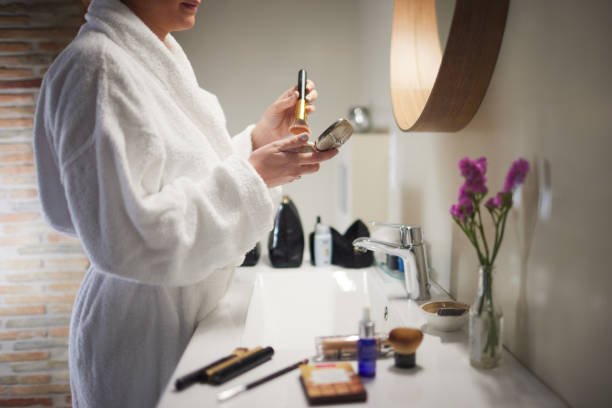
The Evolution of Beauty Products: From Ancient Rituals to Modern Innovations
Welcome to our exploration into the captivating world of beauty, a concept that has held significance across cultures and epochs. From ancient civilizations to modern societies, the pursuit of beauty has been an enduring human endeavour, shaping rituals, arts, and sciences.
Beauty products, as extensions of this quest, have transformed dramatically. What began with rudimentary concoctions made from earth’s elements has evolved into a sophisticated array of formulations, marrying ancient wisdom with cutting-edge technology. Join us as we trace this remarkable journey, highlighting how beauty products have not only adapted to but also influenced societal norms and personal identities through time.
The Roots of Beauty: Ancient Practices
The roots of beauty trace back to ancient civilizations, where rituals and natural ingredients were fundamental to personal care and aesthetics. In Egypt, the use of kohl for eye makeup and henna for body art signified beauty and protection, while Greeks bathed in olive oil for softer skin, showcasing the early understanding of skincare benefits. Across Asia, powdered rice and vermilion were staples for a flawless complexion and vibrant lips, reflecting the diversity in beauty practices. These ancient traditions were more than mere vanity; they symbolised status, health, and alignment with the divine.
Importantly, these early forays into personal care laid the groundwork for modern beauty products. Today’s cosmetics, rich in natural extracts and inspired by traditional recipes, owe their efficacy and inspiration to the pioneering rituals of our ancestors. This historical continuum not only enriches our appreciation of beauty but also underscores the timeless pursuit of aesthetics and well-being.
The Industrial Revolution and Beauty
The Industrial Revolution marked a pivotal shift in the beauty product industry, transforming artisanal practices into a burgeoning market driven by mass production and distribution. This era of innovation and mechanisation made beauty products more accessible to the wider public, breaking the exclusivity once reserved for the aristocracy. A key milestone in this evolution was the introduction of the first commercially available lipsticks and face powders in the late 19th and early 20th centuries.
Lipsticks were no longer concocted at home from beeswax and plant dyes but produced in factories and elegantly encased in metal tubes, revolutionising the way women approached makeup. Similarly, face powders transitioned from being sold in loose form to being compacted into portable cases, embodying the convenience and modernity of the time. These innovations not only democratised beauty, making it a staple of everyday life but also laid the foundations for the global industry we recognise today.
The Rise of the Modern Beauty Industry
The 20th century witnessed an unprecedented explosion of the beauty industry, fueled by groundbreaking innovations in product development and marketing strategies. This era saw the birth of iconic brands that would come to define beauty standards globally, leveraging the power of advertising to reach vast audiences. Companies like Estée Lauder, Revlon, and L’Oréal pioneered research and development in cosmetics, introducing products that promised not just enhancement of physical features but also skincare benefits. The mid-century also marked the advent of television advertising, allowing brands to craft compelling narratives around beauty and femininity, further embedding these products into the fabric of society.
The latter part of the century saw the emergence of beauty influencers, initially through magazines and television, and later through digital platforms. These influencers played a pivotal role in shaping beauty trends and consumer preferences, offering personalised advice and tutorials that made beauty more accessible. The rise of social media platforms in the 21st century transformed influencers into powerful marketing tools for beauty brands, enabling direct engagement with consumers and fostering a more inclusive and diverse beauty community. This evolution reflects the beauty industry’s adaptability and its continuous drive to innovate, both in product formulation and its approach to connecting with consumers.
Embracing Natural and Organic Products
The beauty industry has witnessed a significant paradigm shift in recent years, with a growing consumer preference for natural, organic, and cruelty-free products.
This movement is rooted in a deeper awareness and concern for health, the environment, and animal welfare. Consumers are now more informed and conscientious about the products they use, demanding transparency in product ingredients and ethical sourcing practices.
Key aspects of this shift include:
- Natural and Organic Ingredients: There’s a heightened demand for products formulated with ingredients derived from nature, free from harmful chemicals and synthetic additives. This preference stems from the belief in their safety, efficacy, and minimal environmental impact.
- Cruelty-Free Practices: Consumers are increasingly advocating for beauty products that are not tested on animals, reflecting a broader ethical stance against animal cruelty.
- Sustainable and Ethical Sourcing: There’s a growing expectation for brands to adopt sustainable sourcing practices that ensure the conservation of biodiversity, and ethical treatment of workers across the supply chain.
This trend towards natural, organic, and cruelty-free beauty products signifies a more conscious consumerism, where choices are driven by values as much as by aesthetic or functional considerations. It underscores a collective push for a beauty industry that champions health, sustainability, and ethical responsibility.
The Future of Beauty Products
The future of beauty products is poised at the exciting intersection of technology, personalisation, and sustainability. As we move forward, we can anticipate a more technologically integrated beauty industry, with innovations such as augmented reality makeup simulations and AI-driven skin analysis tools becoming mainstream. These advancements will not only enhance the consumer experience but also pave the way for highly personalised skincare and makeup routines, tailored to each individual’s unique needs and preferences.
Sustainability will continue to be a critical factor in product development. The industry is expected to see a surge in eco-friendly packaging solutions, zero-waste products, and formulations that prioritise biodegradable and renewable ingredients. As consumers become increasingly environmentally conscious, the demand for beauty products that align with these values will grow, guiding brands towards more responsible manufacturing and ethical practices. This evolution promises a future where beauty not only looks good but also does good for our planet and its inhabitants.
In conclusion, the beauty industry’s journey from ancient rituals to embracing technology and sustainability underscores its dynamic evolution. As outlined in this article, FullyEpic stands at the forefront of this transformation, offering beauty products that not only meet the modern consumer’s needs but also embody the innovative spirit and ethical standards that define the industry’s future.


